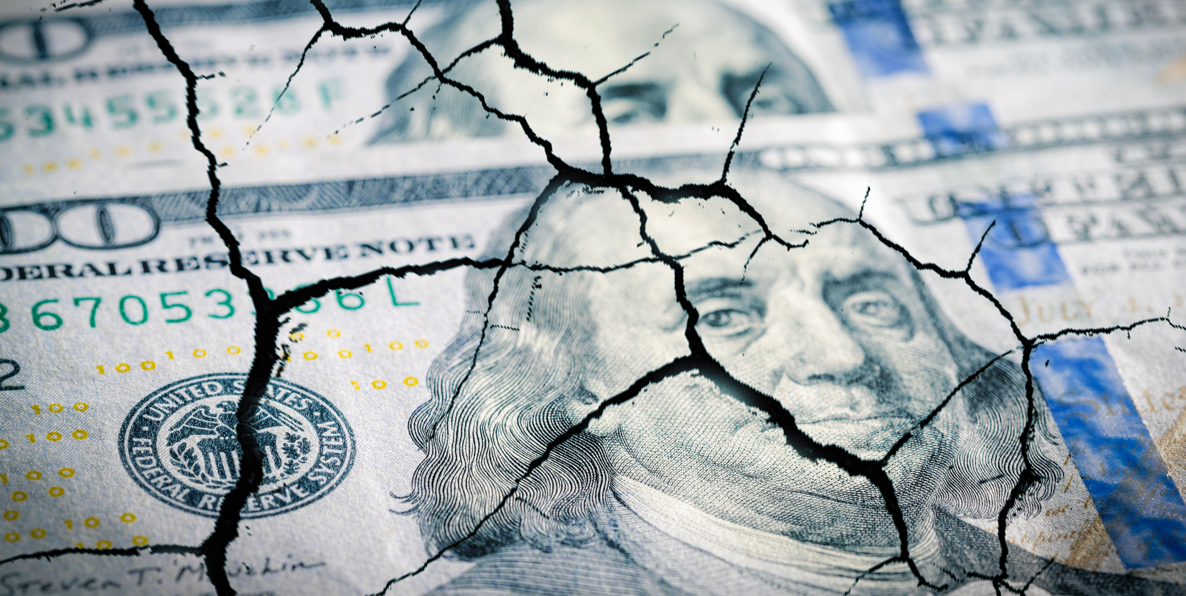
Markets closed 2023 with the strongest rally for equities, bonds, gold, and cryptocurrencies in years. The level of complacency was obvious, registering an “extreme greed” level in the Greed and Fear Index.
2023 was also an unbelievably bad year for commodities, particularly oil and natural gas, something that very few would have predicted in the middle of two wars with relevant geopolitical impact and significant OPEC+ supply cuts. It was also a poor year for Chinese equities, despite slower-than-expected but strong economic growth and robust earnings in the large components of the Hang Seng index.
Markets rallied due to a combination of optimistic expectations for inflation and aggressive rate cuts from central banks. The question now is, what can we expect in 2024?
The year of disinflation can only come from a recession. The market expectations of a massive reduction in inflation cannot come from what economists call a soft landing. The reason we have not seen a recession in 2023 is because the global money supply did not fall below $103 trillion and ended almost at the record level of $107 trillion, according to Citi. Furthermore, governments in developed countries have continued to spend as if inflation and rate hikes did not exist. Fiscal policy has been exceedingly aggressive, while monetary policy has been restrictive. As such, the decline in monetary aggregates and the impact of rate hikes have fallen on the shoulders of the private sector.
Inflation declined in line with monetary aggregates, but we have not yet seen the true impact on the economy because of the lag effect. We are likely to see the full-scale impact of 2023’s monetary contraction in 2024. If the economy weakens and private sector aggregate demand slumps, inflation will decline as expected. However, it is almost impossible to see the kind of goldilocks economy—that many investors predict— and achieve 2% inflation.
Central bank rate cuts will only come from a very weak economy. Central banks never act preemptively. If they end up cutting rates by 150 basis points, it will be because the slowdown in the economy is severe. We cannot bet on one thing or the other. If you believe in a soft landing, you should not expect six rate cuts. Alternatively, if you believe central banks will cut rates five or six times, you should prepare your portfolio for a hard landing—a terribly bad one, in fact.
Commodities may bounce as geopolitical risk creates a floor and marginal demand from China picks up. Markets have ignored the strength of the Chinese economy, which will grow by at least 4.5% in 2023, because the stock market has not performed. However, an economy that grows at this pace despite the real estate sector’s immense challenges should not be ignored. It is probable that marginal demand in energy commodities picks up just as geopolitical risk maintains a floor on the price, leading to a bounce in the commodity complex thanks to China’s marginal demand and India’s rapid growth. As more of the newly created currency goes to relatively rare assets, a looser monetary policy may also support this recovery in commodities
Latin America and Europe will continue to disappoint, while Asia leads in growth. Due to expectations that the worst is over and a relative bounce in the euro against the US dollar, markets have bought European stocks and bonds. The same is happening with LatAm’s risky assets. However, the problems are deeper and more complex. The euro may bounce, but its position as a world reserve currency is weakening relative to the US dollar and rising contenders like the yuan. Europe’s lack of growth is not due to exogenous factors but, like most of LatAm, self-inflicted. The euro area ended 2023 in recession despite low commodity prices and the EU Next Generation Fund. The problem in the euro area and most Latin American countries is the constant implementation of policies that damage growth and bloat governments. In order to undo the nightmare that collectivist interventionism has created, Argentina will probably go through a detox year.
Due to the monetary destruction that central banks have implemented, equity markets may continue to perform satisfactorily, but volatility will likely rise as market optimism clashes with economic reality. Although 2024 will probably not be the year of central bank digital currencies, they are in the pipeline, and this means even more monetary debasement. In this environment, Bitcoin and gold may continue to support the fight against the destruction of the purchasing power of currencies. We cannot ignore bitcoin’s high volatility and risk, but we cannot forget that it has started to separate itself from other cryptocurrencies to be an asset class of its own.
As central banks prepare the way for digital currencies, which are the closest thing to surveillance disguised as money, reserves of value are more needed than ever before. Gold is likely to be a good de-correlated asset that protects against the debasement of sovereign bonds and domestic currencies.
2024 is likely going to be a year of significant slowdown in the major economies considering the current trends in the private sector and a year of rising public debt, which governments will try to disguise with the destruction of the purchasing power of the currency. In that scenario, betting on the swift end of the inflation burst may be premature. If inflation declines as predicted, it will be a result of the economy’s deterioration and the overspending of the government. If debt and government deficits continue to rise, inflation may surprise on the negative side. Either way, the key in 2024 will be to expect more currency destruction.




